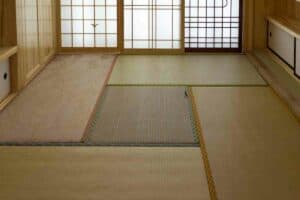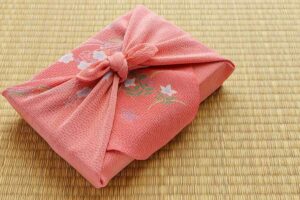Pachira aquatica, the Japanese money tree, is a popular ornamental plant in Japan and across Asia.
Its distinctive foliage, fruit, and raised trucks make it a pleasing houseplant for any home.
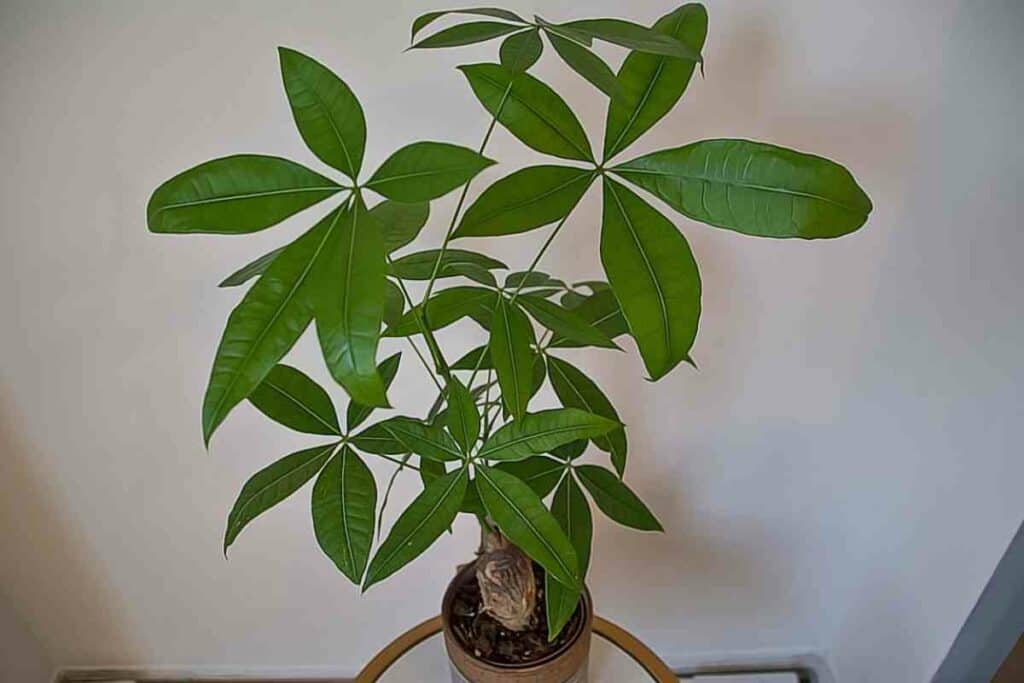
Knowing more about the Japanese money tree and how to care for it will ensure that this beautiful plant thrives in your care.
In this article, we share everything you need to know about this fascinating plant and its care.
Table of Contents
Pachira aquatica: the Japanese money tree guide
The Japanese money tree is an Asian exotic plant that is native to South America but has become extremely popular in Japan and other Asian countries.
It goes by the following names:
- Shake money tree
- Chinese money tree
- Malabar chestnut
- Provision Tree
- French peanut
- Saba nut
- Guiana chestnut
The Japanese money tree first found fame in Asia when a Taiwanese truck driver took 5 plants, braided their trunks, and planted them in a single flower pot.
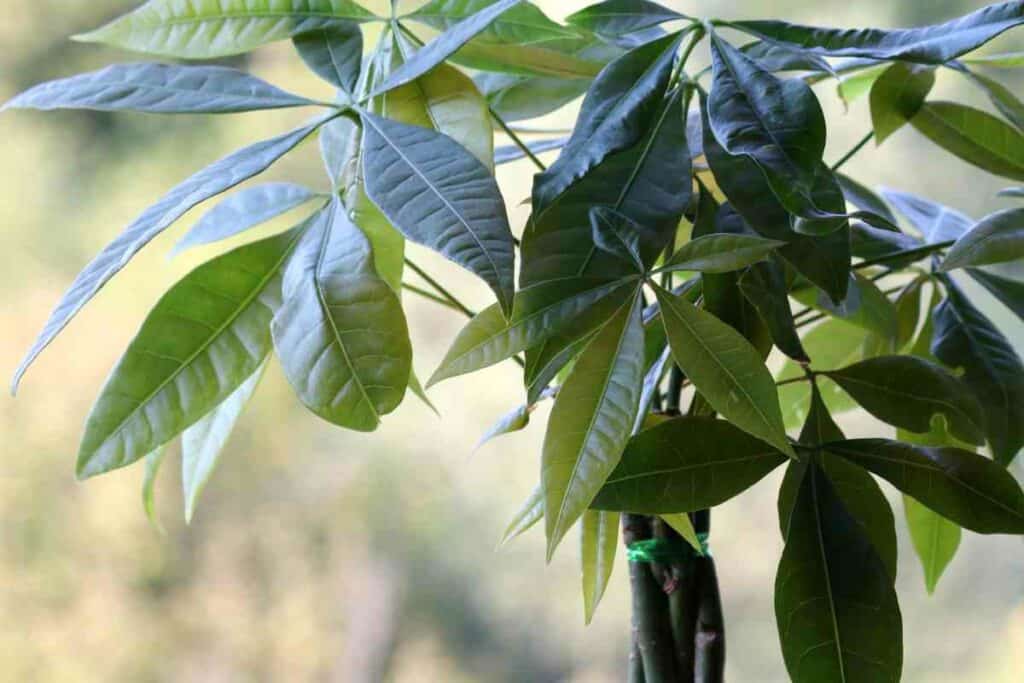
This style of planting not only became popular in Asia but also was associated with good fortune and financial success.
They are often displayed at the entrances to small businesses in Japan for this reason.
About the Japanese money tree
Though pachira aquatica can be grown as a house plant or miniaturized tree, it is capable of formidable growth, reaching heights of more than 59 feet (18 meters) in the wild.
The tree has a trunk with brownish-gray cracked bark. Its branches give rise to long-stalked leaves with a hand-shaped arrangement of shiny, leathery leaflets.
The leaflets can be up to a foot in length but are usually much shorter.
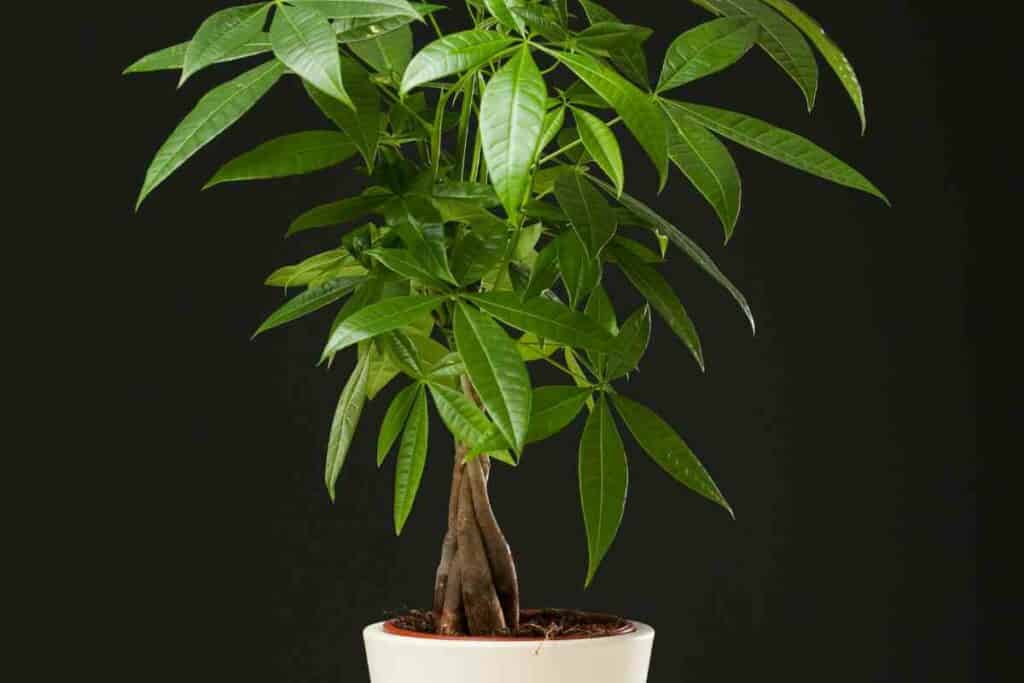
The Japanese money tree produces one of the world’s largest tree flowers. It has long yellow petals that peel back like banana skin to reveal yellow-orange stamens.
Interestingly the leaves and flowers of this plant are edible. After fruiting, the plant produces large firm brown capsules of more than a kilo in weight that contain up to 25 nuts.
The nuts of pachira aquatica are poisonous and should not be handled or eaten.
Japanese money tree plant profile
- Difficulty of cultivation: easy
- Climate: tropical
- Foliage: evergreen
- Position: bright sun, but will tolerate partial shade
- Location: pachira aquatica can be cultivated as an indoor or outdoor plant. If planted outside, it requires moist, frost-free conditions
- Soil type: fast-draining, humus-rich soils
- Soil pH: neutral soils between 6 and 7.5
- Hardiness zone/ region: 10 to 12 ( includes Japan and Southeast Asia, Southern US, central and southern Europe, Australia, and North Africa)
- Minimum temperature: 53 to 75.2 degrees Fahrenheit (12 to 24 degrees Celsius)
- Rate of growth: fast
- Pattern of growth: a tendency to fast vertical growth and leaf spread
- Maximum spread: leaf spread of up to two-thirds its height
- Rootstock: thickened roots that serve as a reservoir
Growing the Japanese money tree
Part of the success of the Japanese money tree is that it roots easily from cutting and also can be grown from seeds.
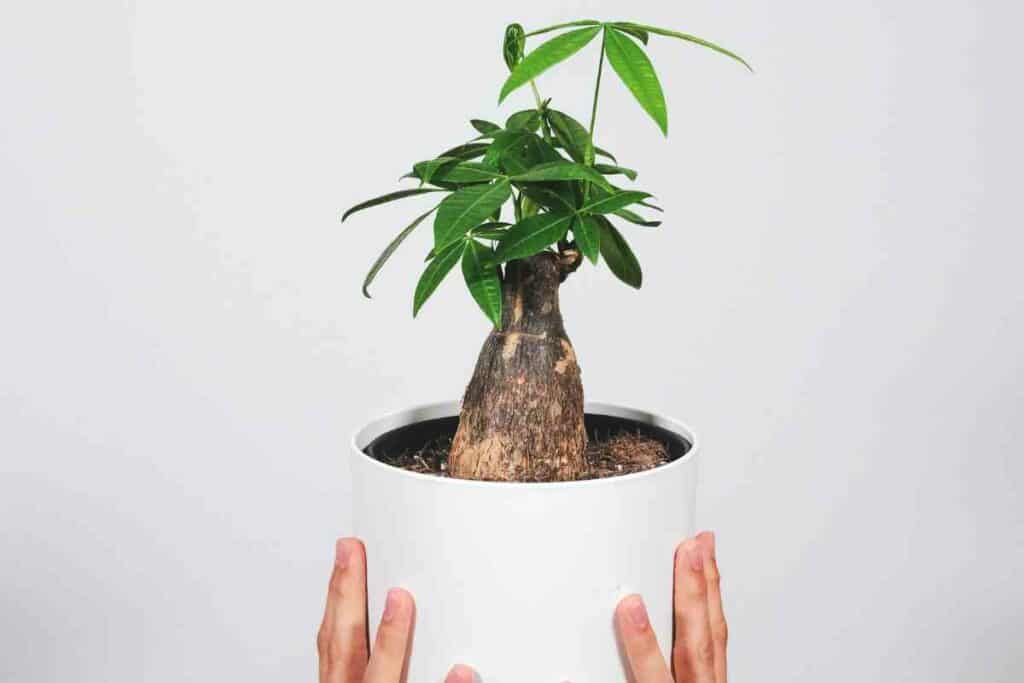
Here are the key points for growing a Japanese money tree of your own.
Germinating the Japanese money tree
Japanese money tree seeds are available from specialist retailers. Sow the seeds on a moist substrate that drains well.
Keep humidity high by keeping the seeds in a warm place with a plastic bag over the pot.
Surprisingly these seeds sprout easily within days. Maintain humid moist conditions in bright sunlight to support the seedlings to establish successful growth.
Japanese money tree seedlings can be potted on in an organic-rich all-purpose compost. Growth can be accelerated by placing young plants on a heat mat to maintain the warmth they need.
Propagating the Japanese money tree from cuttings
Propagating the money tree from cuttings is a far easier method of growing your own plant.
Take a stem cutting that has at least two leaf nodes and place it in a glass of water until roots form or dip the cut end in rooting powder.
The cutting can be planted in a basic potting mix, keeping the plant warm and moist until fully established (within a month).
Can you braid a money tree?
Yes! You can braid your own Japanese money tree.
You simply have to grow multiple plants together and gently weave the trunks together while they are young and flexible.
Once you have loosely braided the trunks tie them with string to keep them together and continue to braid them as they grow.
Caring for the pachira aquatic
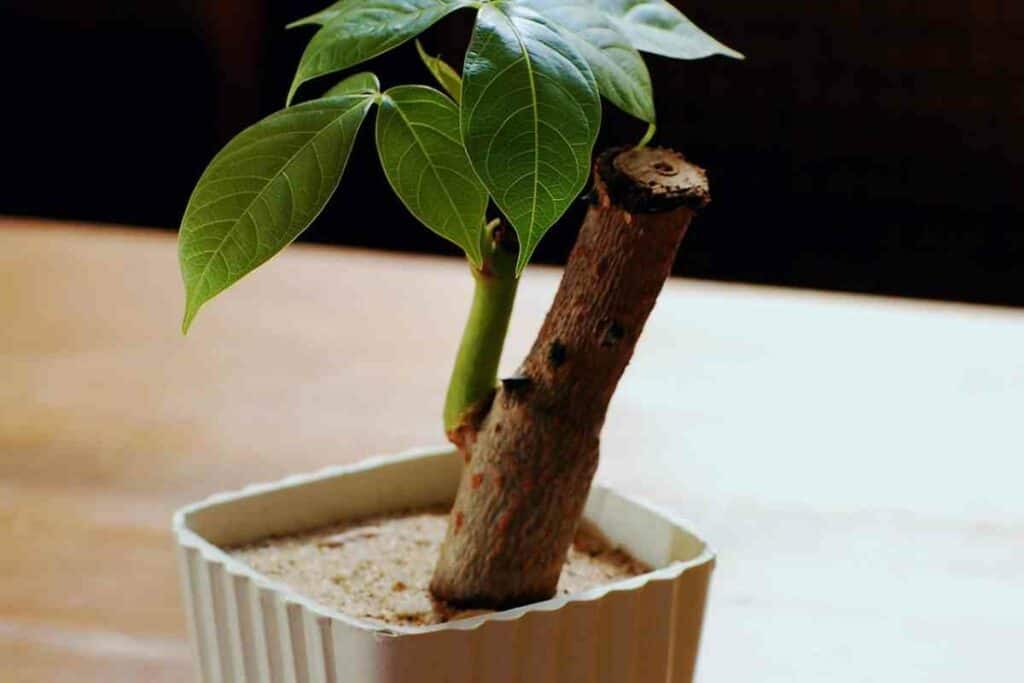
The Japanese money tree is easy to care for as a houseplant, as you can maintain the warmth and light it loves all year round.
For the best results with this plant, ensure it receives at least six hours of sunlight each day.
With good care, this plant is hardly bothered by any houseplant pests and diseases.
Feeding Japanese money tree
This plant is low maintenance and should be fed infrequently.
A regular all-purpose fertilizer is suitable for feeds and should be added to waterings on a weekly basis between spring and fall to maintain its vigor.
Watering Japanese money tree
Watering should prioritize the root area of the money tree.
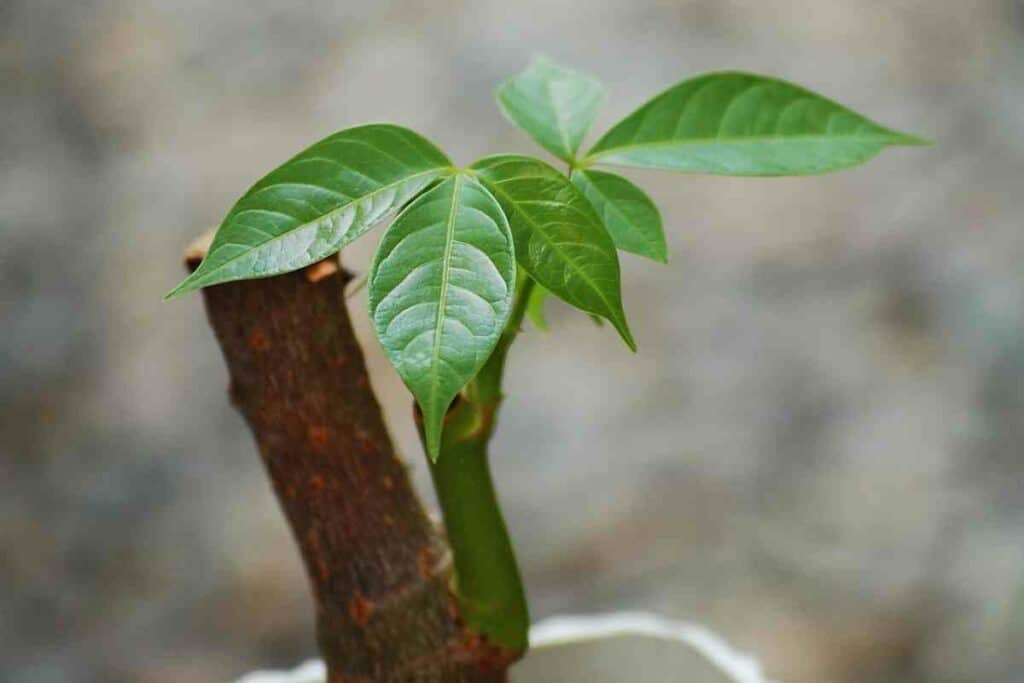
Young plants should be watered lightly on a daily basis, especially if the soil drains well.
Check the plant by examining its soil, if the soil comes out dry when you push a cocktail stick into it, it’s time to water again.
Avoid overwatering your plant or splashing the leaves with water to prevent mildew.
Pruning Japanese money tree
If you want dense foliage on your money tree, prune it back in the winter for more vigorous spring growth.
Lightly prune any dead or dying leaves to keep your plant in shape.
Rounding Up
The Japanese money plant has million-dollar looks and is easy to care for.
This Japanese favorite is growing in popularity across the western world, with exports from Taiwan where it is primarily cultivated.
As a houseplant, it is incredibly adaptable and will thrive with adequate warmth, water, and light.
- Best Japanese Knives Top Picks for Every Kitchen
- Japan’s Bold New Trend: Dressing Like a British Gentleman (or at Least Trying)
- 7 Best Japanese Sunscreen Products You Can Buy Online
- 5 Best Japanese Makeup Brushes for a Flawless Finish
- 7 Benefits Of Tatami Mats You Should Know
- The Best Furoshiki Wrapping Cloths: Inspiration, Ideas & Cloths You Can Buy





